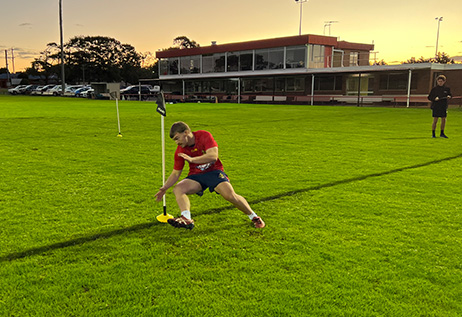When we are trying to improve performance, we often think about training frequency or intensity, recovery periods, sleep, stretching and staying on top of any niggling injuries. Often, nutrition can be the missing piece of the puzzle to get the most out of your body during training or competition.
Adequate nutrition and appropriate timing of certain foods can reduce fatigue, improve recovery, reduce risk of injury and assist training progression. It is important to test any changes to your eating habits during training or minor competitions to fine-tune your approach. So, let’s have a look at some performance nutrition principles:
Key Nutrients for Performance
- Carbohydrates – main source of fuel for muscles and brain
- Protein – promotes muscle growth and repair
- Colour (fruit & vegetables) – support immune function, fibre
- Healthy fats – keep you feeling full, reduce inflammation
- Water – hydration, helps to reduce fatigue, aids recovery
Fuelling around training sessions or competition
Pre-training fuelling focuses on carbohydrates (carbs), which break down into sugar (glucose) to be used by your muscles & brain for energy or stored in your liver. The closer to activity you get, the faster we want the foods we eat to break down into glucose. To achieve this, we reduce the healthy fat, protein and fibre content, as we get closer to the session.
- 3-4 hours before: meal e.g. ham & salad wholegrain roll, chicken fried rice, sushi, beef stir fry with vegetables and noodles
- 1-2 hours before: Vita-weats with tomato and cheese, protein yoghurt with muesli bar and fruit, fruit smoothie (with oats & Greek yoghurt)
- 30-60 minutes before: handful dried fruit, piece fruit, snack bag popcorn, crumpet/pikelet with jam or honey, rice crackers/corn thins, sugary muesli bars (LCM, Milo, Uncle Toby’s Classic)
- 15-30 minutes before: lollies, sports drinks, sports gels, fruit juice
The same structure can be used for between events on competition or tournament days. For example, if you had 30 minutes between events or needed a half time pick me up you would use lollies or sports drinks whereas if you had an hour or two between events you might have a sandwich.
Do I need to fuel during my training session?
Our bodies generally burn through all glucose stored in our body by the 60-90 minute mark, including any top ups just before training. So, if you’re training longer than 90 minutes, it would be an idea to have some easily digestible carbs on you to start having from about the 45 minute mark. This could be sports drinks or gels, lollies, dried fruit or fruit. It all depends on what works best for the activity you are doing and what sits best in your stomach.
What about after training or competition?
Recovery nutrition is just as important as fuelling for your performance. The four principles of recovery nutrition are:
- Refuel: include carbohydrates after your workout to replenish your energy stores and reduce fatigue in the recovery period
- Repair: include protein to improve muscle repair and growth in response to exercise
- Revitalise: include fruits and vegetables to increase intake of vitamins, minerals and antioxidants which help to support your immune system and reduce exercise-related inflammation or stress.
- Rehydrate: steadily drink water to thirst for over the few hours post-exercise. You may find electrolyte drinks can be helpful if you have been sweating excessively or exposed to high temperatures or humidity. Rehydrating also helps to promote recovery & reduce fatigue.
The aim is generally to eat a meal within 2-3 hours of finishing exercise. There is a 4 hour window where carbohydrate stores replenish faster and eating protein within the hour following exercise can help to prolong protein synthesis response. However, it is better to spread intake of each meal component throughout the day. An ideal, recovery meal would be portioned like this:
Some people experience post-exercise appetite loss, which is where liquid options can be handy until appetite returns. This could be in the form of a smoothie or flavoured milk or protein drink, may be juice or sports drinks after endurance events to provide an initial energy top up.
This information has been adapted from various Sports Dietitians Australia factsheets and their Sports Nutrition Essentials course content.
